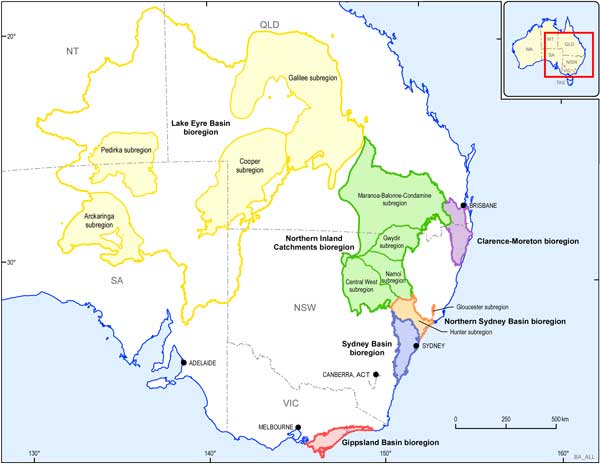Bioregional assessments strengthen the science behind decisions on proposed coal seam gas and coal mining developments.
What they are
Bioregional assessments assessed the potential cumulative impacts to water resources from coal seam gas and coal mining developments. This includes potential impacts on:
- rivers
- wetlands
- groundwater-dependent assets.
Bioregional assessments areas were in:
- Queensland
- New South Wales
- Victoria
- South Australia.
The program was completed in 2018.
More information is available on the Bioregional Assessments website.
Role of the IESC
The IESC advised the Australian Government on the scope of its bioregional assessments.
The IESC endorsed the Bioregional Assessment Methodology. This is a technical guide for scientific researchers undertaking bioregional assessments.
How bioregional assessments are used
Bioregional assessments identified where cumulative impacts from coal resource developments may occur. They also identified where impacts are unlikely.
The IESC can use this information when developing their advice to regulators.
Bioregional assessment areas

Source: Bioregional Assessment Programme, Commonwealth of Australia (2014)

